Adventures in Italy: Dongo to Rif. Giovo via SP5
The day after my Ghisallo ride I did a flatter ride through Switzerland and on to Lake Maggiano (returning by car with family who'd driven out). Not much epic about that one, just plenty of gorgeous roads. But the next day got more interesting. I headed north along Como from Menaggio to Doggio for a relaxed panini lunch, then turned inland.
On Google Maps it looked promising: squiggly lines, altitude contours, and a road which was defined all the way to Switzerland. But on the simpler commercial map I was using, it terminated. I was intrigued. It's too easy to stick with climbs which have been used in major European road races. Sometimes it's fun to just head out and see where the road takes you.
So after lunch I found the sign marking the road and I set off:
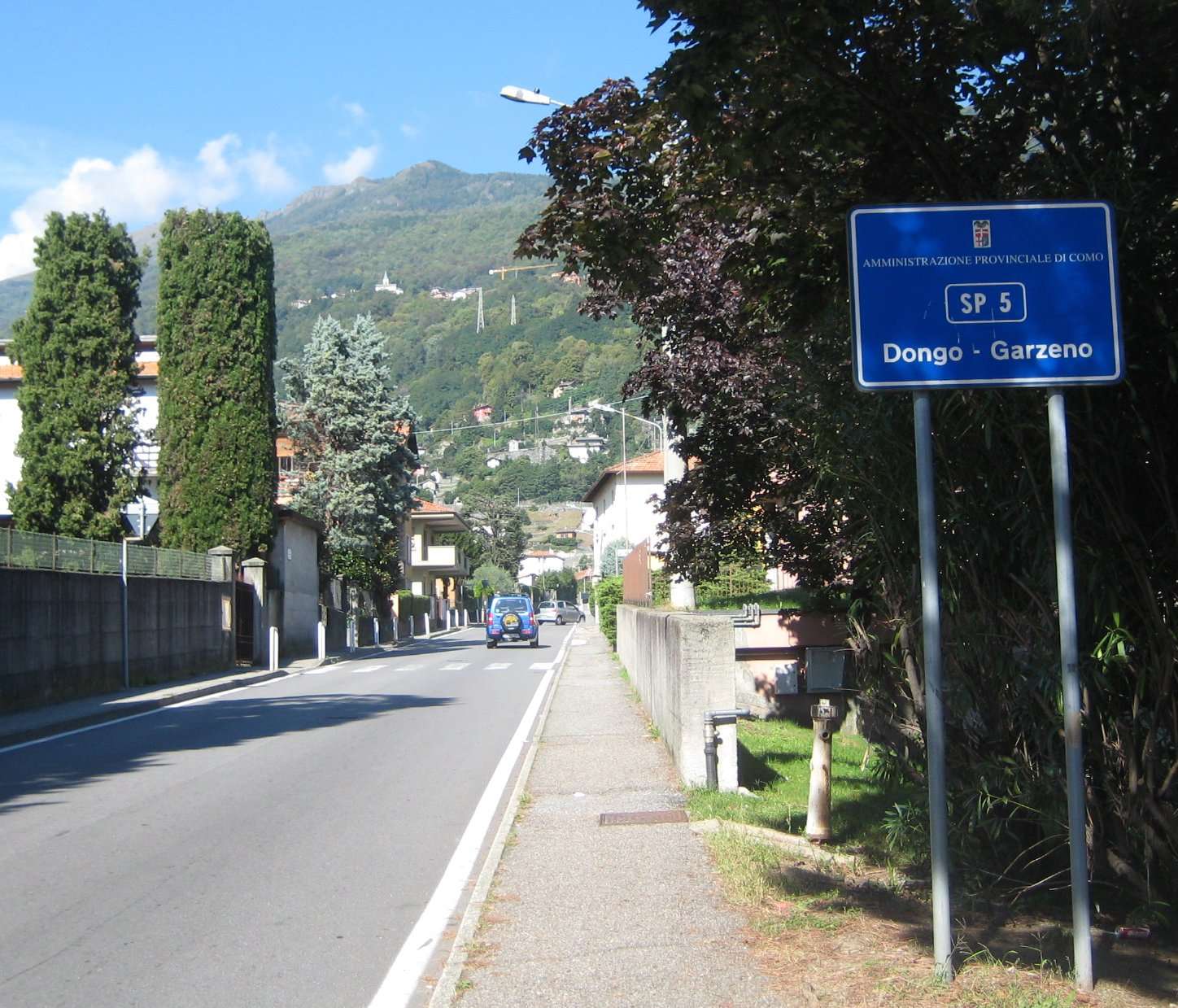
The road was in excellent condition. I'd say "surprisingly" well paved except I've come to expect excellent pavement in Europe.
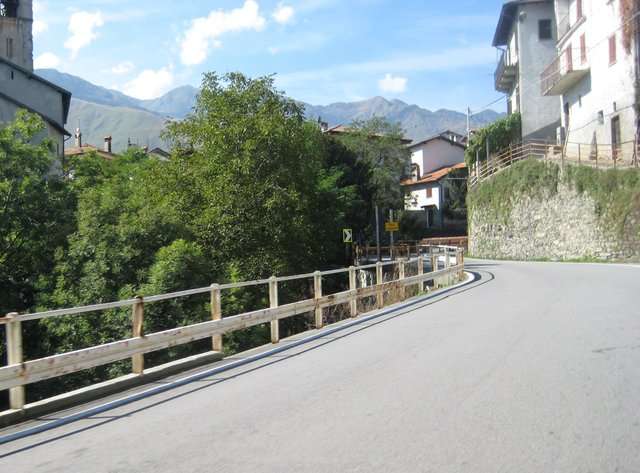
The road passed through Stazzona first, then Germasino, then Garzeno. By this point it had diminished to something on the adventurous side. It was still excellently paved, however. In Garzeno there were two candidate paths through the town. On the way up, I chose the "local" route, in which the road turned into little more than an alleyway before re-merging with the other option. Somewhat past Garzeno was this sign, indicating the way to Passo di San Iorio at the border with Switzerland. Note the altitude; I was at less than half of this.
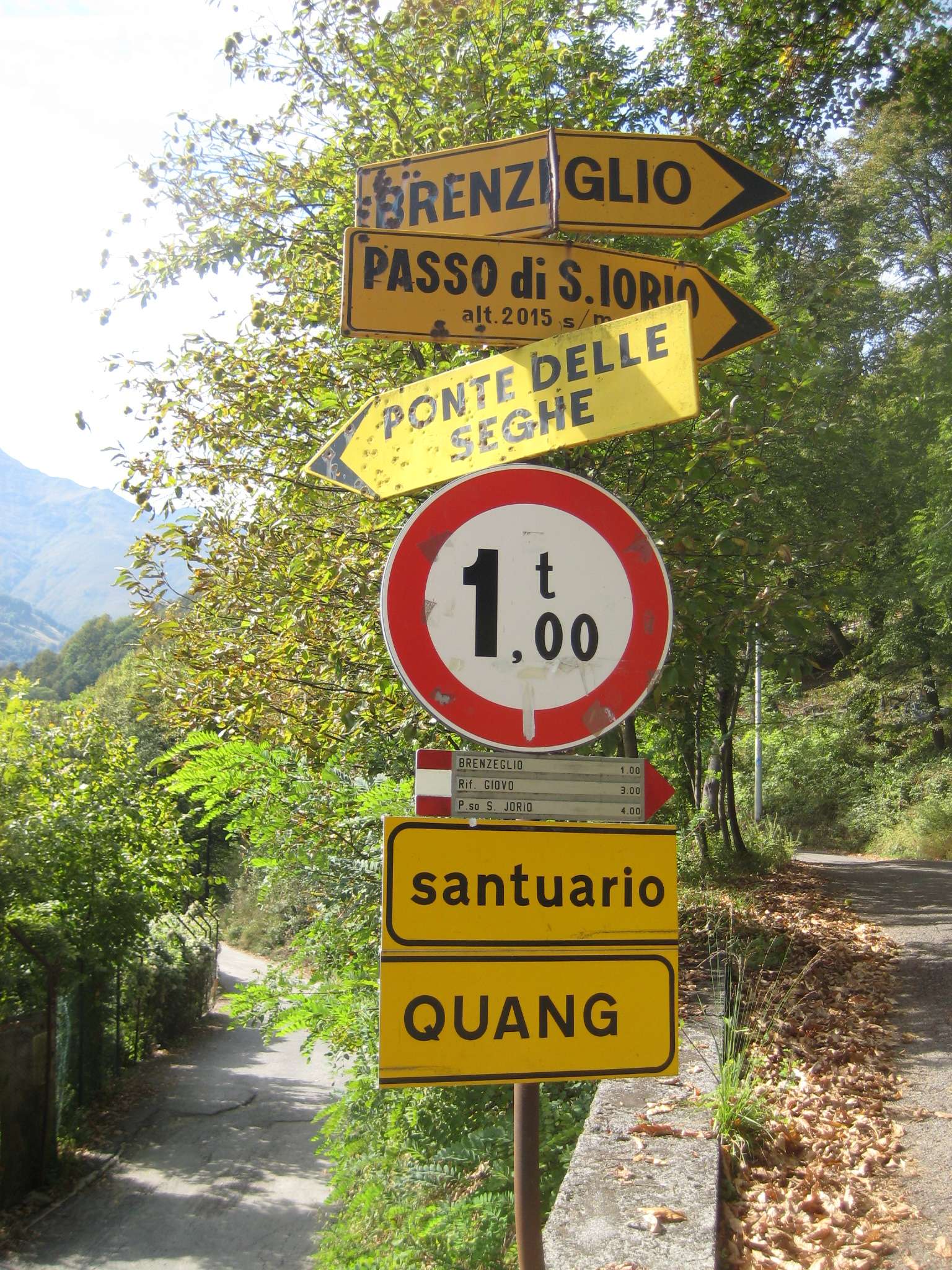
I climbed on, although past Germasino the pavement was rougher. After climbing the now extremely narrow road, wondering what I'd do if there was an uncoming car, I eventually came to an end of the pavement. I hit my Edge 500 lap button, marking the end of the Strava segment. I contemplated turning back here, but the dirt was very ridable, so I knew I couldn't let myself the hook so easily. The climb to this point had gained 693 meters, already more than most San Francisco Bay area climbs (similar to Soda Springs Road).
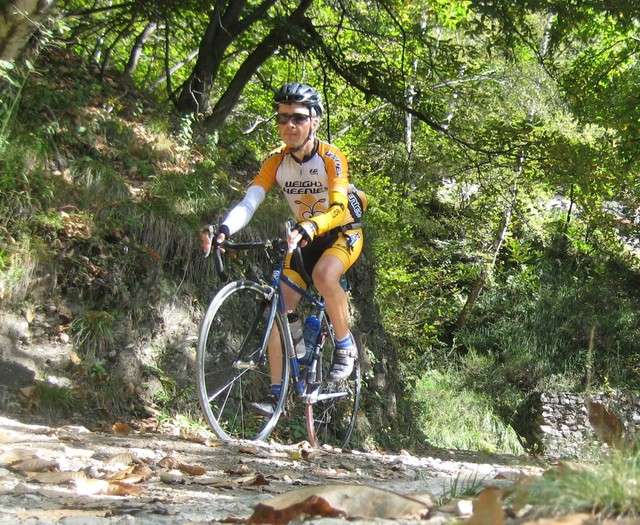
Yet finally I arrived at Brenzeglio, a group of houses perched on the incredibly scenic hill-side. I stopped by the fountain next to a road sign, contemplating what to do next, when an old man shouted at me from a window above.
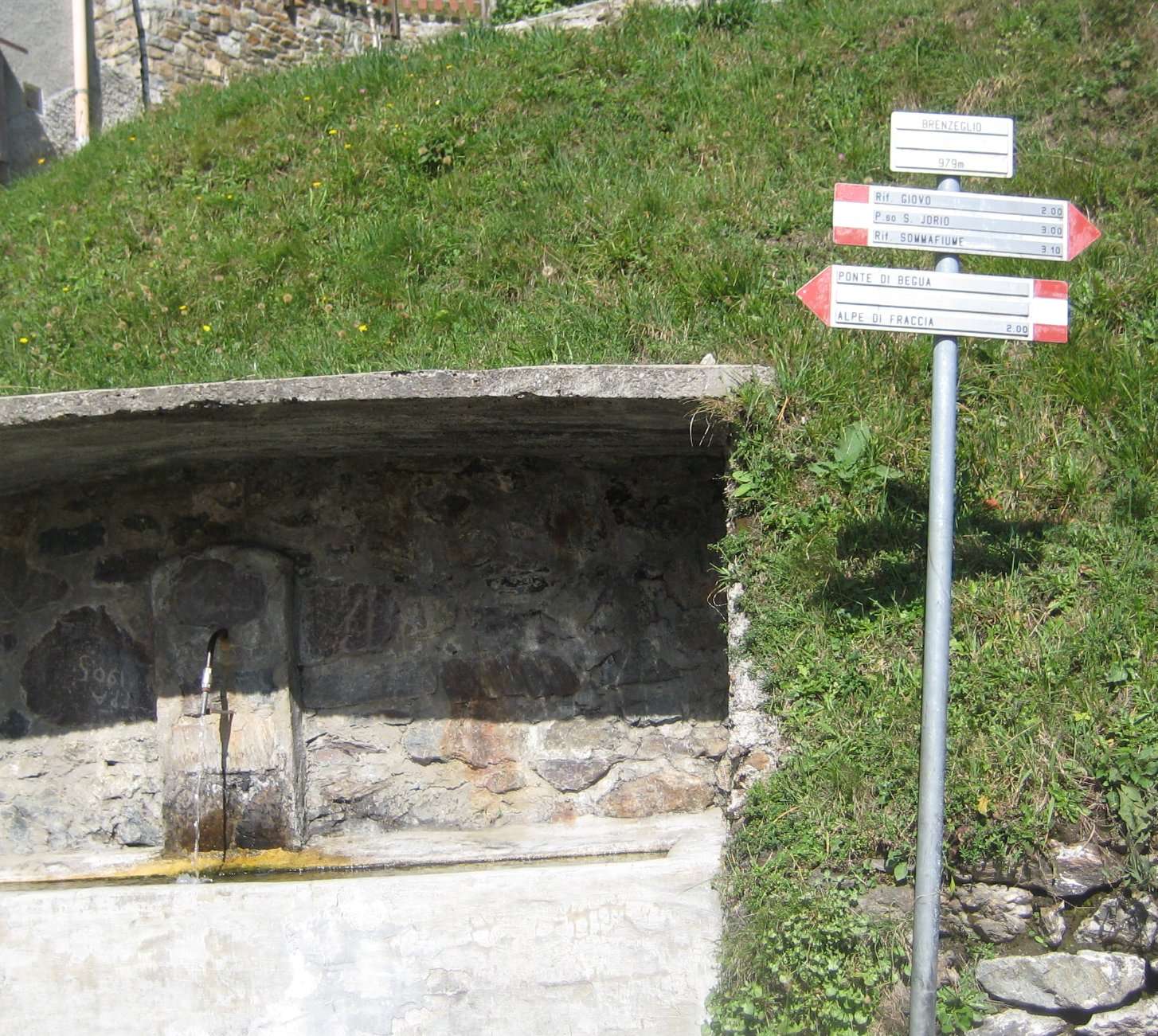
I finally realized from the few words I understood that he disapproved of my tires, which were too narrow. The road ahead was broken, he was telling me, and my bike was unsuitable. Furthermore, he pointed in the distance at some buildings much higher up on the hill, to where the road obviously went. I respectfully indicated I wanted to try anyway: the buildings looked intriguing. Sure, it looked bad here, but I expected the steep stone-strewn road in town to give way to a more gradual, smoother dirt later. After all, someone had to be able to get to those buildings, and I assumed it wasn't by mule.
You have to admit it looked ugly though:
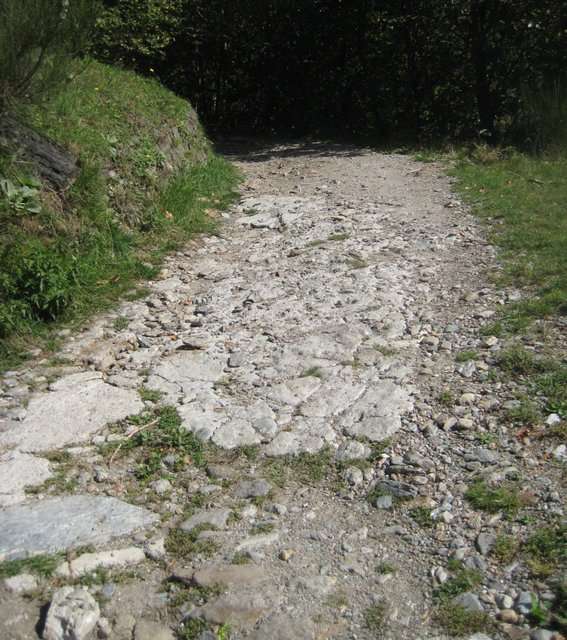
in fact the surface did change after this to more dirt. But the combination of roughness, looseness, and steepness was just too much for my lack of Sven-Nys-like-skills. I walked most of the way in my Speedplay cleats.
At this point I could only marvel at how the road vertical the road was, here coming out of a switchback from the right.
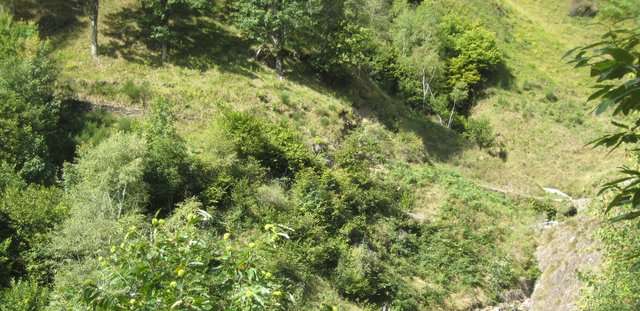
Taking the prominent tree as a vertical reference, and neglecting the perspective, the road has a gradient of 20%, which turns out to be what I measured as average on the Garmin for this part of my ride (more accurately my "walk").
i was never able to make the decision that the step I'd just completed would be my last, however, and eventually I got to the buildings I'd been going after. Nothing abandoned about these. Somehow they get supplies to this place, and bring trash down.
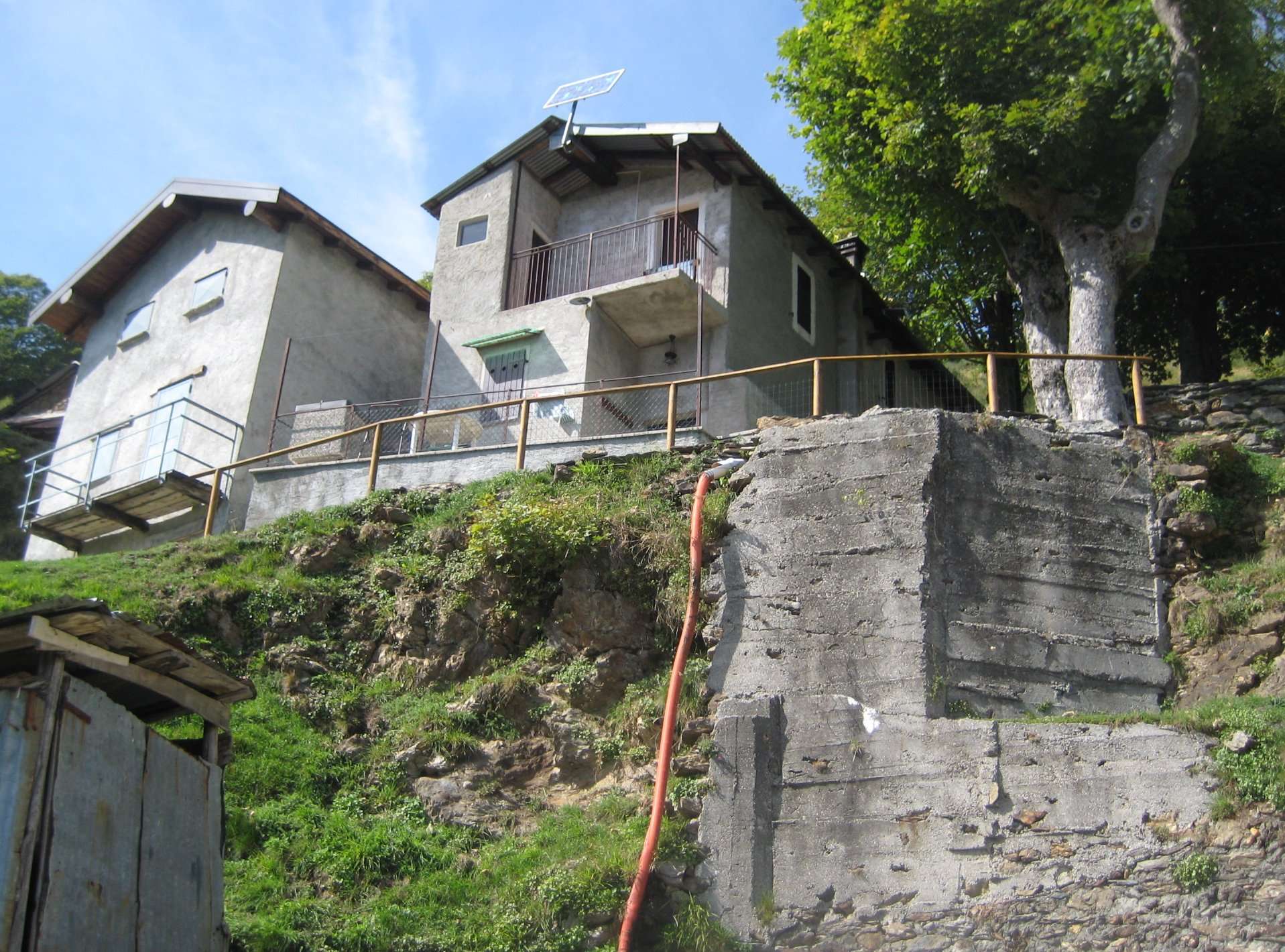
Just as I took the photo I passed some German hikers going the opposite direction.
The road continued, as promised, but I knew I was done: this was apparently Rifuge Giovo. The old man's warning had been on target: I needed bigger tires, much bigger. Still, what I had done had been worth it for the view alone, although no doubt the view was even more spectacular approaching the pass, most of 1000 meters higher.
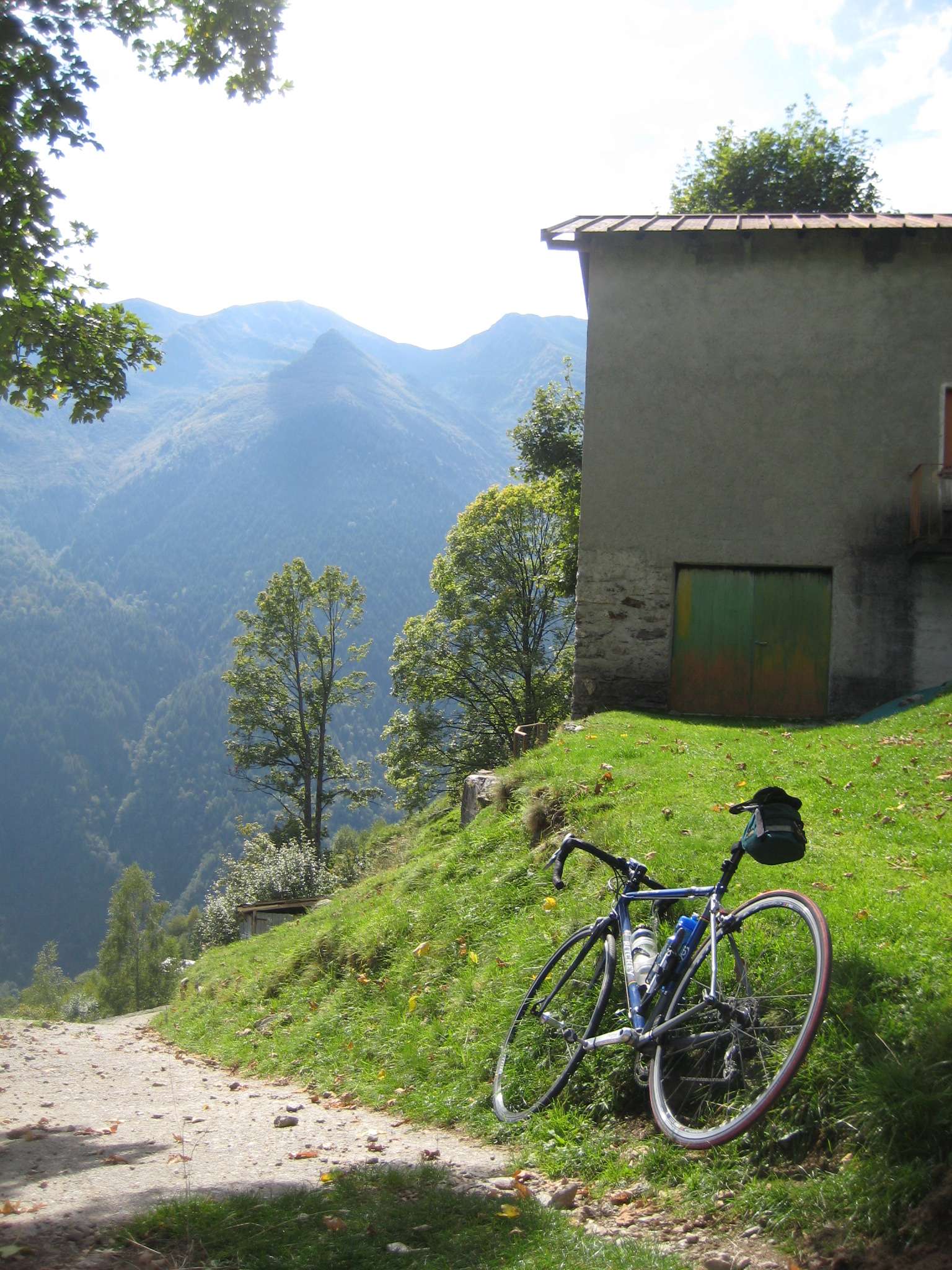
The route profile doesn't quite due justice to this one, at least to what over the final 2 km was 90% hike-a-bike, at least for me. You can see the climb is already considerable to the end of pavement, but it's the unpaved portion which pushes this one into the epic category:

So how's it rate? To the end of the pavement, the Low-Key Hillclimbs rating algorithm (Old La Honda = 100) scores it at 174. But to the point I turned around the rating blows out to 268. In contrast, the Tourmalet in France as climbed in the 2010 Tour de France rates 361. The toughest climb from the Low-Key Hillclimbs according to the rating has been Alba Road, which is rated 235.
After admiring the view, I walk-trotted the gnarliest of the steep trail/road. About the time I overtook the German couple I'd passed going up, the trail became rideable downhill. I was quickly back on the pavement, and the rest of the ride down into Dongo was smooth. Sure, descending the narrow, twisting roads demanded plenty of attention against the occasional oncoming car, but here, on the back roads of Italy, drivers have been dealing with these conditions their whole adult lives, and they're exercising as much care as I am. My degree of paranoia is borne more of my experience in the US, where driver attitudes, experience, and training differ.
My ride continued around the north short of Lake Como, following the route of the then-upcoming Giro di Lombardia, at least until my next climb, another worthy adventure. But this blog post is already reaching if not surpassing Bike-Snobbish proportions, so enough for today.
Anyway, if you're visiting Lake Como, don't just stick to the obvious. This was just one of the many climbs which go up into the mountains from the well-traveled shores. I picked it almost at random. I went on to another one later in the ride. But there's so much I didn't have time to explore.
On Google Maps it looked promising: squiggly lines, altitude contours, and a road which was defined all the way to Switzerland. But on the simpler commercial map I was using, it terminated. I was intrigued. It's too easy to stick with climbs which have been used in major European road races. Sometimes it's fun to just head out and see where the road takes you.
So after lunch I found the sign marking the road and I set off:

The road was in excellent condition. I'd say "surprisingly" well paved except I've come to expect excellent pavement in Europe.

The road passed through Stazzona first, then Germasino, then Garzeno. By this point it had diminished to something on the adventurous side. It was still excellently paved, however. In Garzeno there were two candidate paths through the town. On the way up, I chose the "local" route, in which the road turned into little more than an alleyway before re-merging with the other option. Somewhat past Garzeno was this sign, indicating the way to Passo di San Iorio at the border with Switzerland. Note the altitude; I was at less than half of this.

I climbed on, although past Germasino the pavement was rougher. After climbing the now extremely narrow road, wondering what I'd do if there was an uncoming car, I eventually came to an end of the pavement. I hit my Edge 500 lap button, marking the end of the Strava segment. I contemplated turning back here, but the dirt was very ridable, so I knew I couldn't let myself the hook so easily. The climb to this point had gained 693 meters, already more than most San Francisco Bay area climbs (similar to Soda Springs Road).

Yet finally I arrived at Brenzeglio, a group of houses perched on the incredibly scenic hill-side. I stopped by the fountain next to a road sign, contemplating what to do next, when an old man shouted at me from a window above.

I finally realized from the few words I understood that he disapproved of my tires, which were too narrow. The road ahead was broken, he was telling me, and my bike was unsuitable. Furthermore, he pointed in the distance at some buildings much higher up on the hill, to where the road obviously went. I respectfully indicated I wanted to try anyway: the buildings looked intriguing. Sure, it looked bad here, but I expected the steep stone-strewn road in town to give way to a more gradual, smoother dirt later. After all, someone had to be able to get to those buildings, and I assumed it wasn't by mule.
You have to admit it looked ugly though:

in fact the surface did change after this to more dirt. But the combination of roughness, looseness, and steepness was just too much for my lack of Sven-Nys-like-skills. I walked most of the way in my Speedplay cleats.
At this point I could only marvel at how the road vertical the road was, here coming out of a switchback from the right.

Taking the prominent tree as a vertical reference, and neglecting the perspective, the road has a gradient of 20%, which turns out to be what I measured as average on the Garmin for this part of my ride (more accurately my "walk").
i was never able to make the decision that the step I'd just completed would be my last, however, and eventually I got to the buildings I'd been going after. Nothing abandoned about these. Somehow they get supplies to this place, and bring trash down.

Just as I took the photo I passed some German hikers going the opposite direction.
The road continued, as promised, but I knew I was done: this was apparently Rifuge Giovo. The old man's warning had been on target: I needed bigger tires, much bigger. Still, what I had done had been worth it for the view alone, although no doubt the view was even more spectacular approaching the pass, most of 1000 meters higher.

The route profile doesn't quite due justice to this one, at least to what over the final 2 km was 90% hike-a-bike, at least for me. You can see the climb is already considerable to the end of pavement, but it's the unpaved portion which pushes this one into the epic category:

So how's it rate? To the end of the pavement, the Low-Key Hillclimbs rating algorithm (Old La Honda = 100) scores it at 174. But to the point I turned around the rating blows out to 268. In contrast, the Tourmalet in France as climbed in the 2010 Tour de France rates 361. The toughest climb from the Low-Key Hillclimbs according to the rating has been Alba Road, which is rated 235.
After admiring the view, I walk-trotted the gnarliest of the steep trail/road. About the time I overtook the German couple I'd passed going up, the trail became rideable downhill. I was quickly back on the pavement, and the rest of the ride down into Dongo was smooth. Sure, descending the narrow, twisting roads demanded plenty of attention against the occasional oncoming car, but here, on the back roads of Italy, drivers have been dealing with these conditions their whole adult lives, and they're exercising as much care as I am. My degree of paranoia is borne more of my experience in the US, where driver attitudes, experience, and training differ.
My ride continued around the north short of Lake Como, following the route of the then-upcoming Giro di Lombardia, at least until my next climb, another worthy adventure. But this blog post is already reaching if not surpassing Bike-Snobbish proportions, so enough for today.
Anyway, if you're visiting Lake Como, don't just stick to the obvious. This was just one of the many climbs which go up into the mountains from the well-traveled shores. I picked it almost at random. I went on to another one later in the ride. But there's so much I didn't have time to explore.

Comments